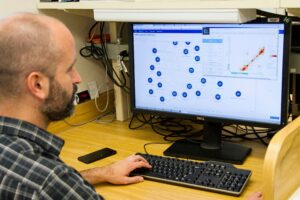
The official tally of exoplanets—planets located outside our solar system—monitored by NASA has now surpassed 6,000. This milestone is a testament to the relentless efforts of scientists worldwide, who continuously add confirmed planets to the count. The task of tracking these celestial bodies falls to NASA’s Exoplanet Science Institute (NExScI), situated at Caltech’s IPAC in Pasadena, California. With over 8,000 additional candidate planets awaiting confirmation, NASA remains at the forefront of the quest to uncover life in the universe.
“This milestone represents decades of cosmic exploration driven by NASA space telescopes—exploration that has completely changed the way humanity views the night sky,” stated Shawn Domagal-Goldman, acting director of the Astrophysics Division at NASA Headquarters in Washington. “Step by step, from discovery to characterization, NASA missions have built the foundation to answering a fundamental question: Are we alone?”
The Journey to 6,000 Exoplanets
The landmark achievement comes three decades after the first exoplanet was discovered orbiting a star similar to our Sun in 1995. Prior to this, only a few planets had been identified around stars that had exhausted their nuclear fuel. Despite the belief that billions of planets exist within the Milky Way galaxy, the task of locating them remains formidable. As the number of known exoplanets grows, scientists gain insights into how these distant worlds compare to the planets of our own solar system.
For instance, while our solar system hosts an equal number of rocky and giant planets, research suggests that rocky planets are more prevalent in the universe. Scientists have also identified a variety of planets vastly different from those in our solar system, including Jupiter-sized planets that orbit closer to their stars than Mercury does to the Sun, planets with dual stars, and even planets with no stars at all.
Understanding the Diversity of Exoplanets
“Each of the different types of planets we discover gives us information about the conditions under which planets can form and, ultimately, how common planets like Earth might be, and where we should be looking for them,” explained Dawn Gelino, head of NASA’s Exoplanet Exploration Program (ExEP) at the Jet Propulsion Laboratory in Southern California. “If we want to find out if we’re alone in the universe, all of this knowledge is essential.”
Methods of Discovering Exoplanets
Currently, fewer than 100 exoplanets have been directly imaged due to the faintness of these planets compared to their parent stars. The remaining discoveries rely on indirect methods. The transit method, for example, involves detecting a star’s slight dimming as a planet passes in front of it. To confirm an exoplanet candidate, follow-up observations are necessary, often requiring additional telescopes, which contributes to the lengthy list of candidates in the NASA Exoplanet Archive awaiting verification.
“We really need the whole community working together if we want to maximize our investments in these missions that are churning out exoplanet candidates,” said Aurora Kesseli, deputy science lead for the NASA Exoplanet Archive at IPAC. “A big part of what we do at NExScI is build tools that help the community go out and turn candidate planets into confirmed planets.”
The Future of Exoplanet Exploration
The pace of exoplanet discoveries has accelerated in recent years, with the database reaching 5,000 confirmed exoplanets just three years ago. This trend is expected to continue, bolstered by the European Space Agency’s Gaia mission and NASA’s upcoming Nancy Grace Roman Space Telescope, which will employ gravitational microlensing to discover new exoplanets.
NASA’s future endeavors will focus on identifying rocky planets similar to Earth and analyzing their atmospheres for biosignatures—evidence of past or present life. The James Webb Space Telescope has already examined the atmospheres of over 100 exoplanets, but studying Earth-like planets will require advanced technology to block the overwhelming glare of their stars.
Technological Innovations on the Horizon
NASA is developing two main initiatives to address this challenge. The Roman telescope will feature a technology demonstration known as the Roman Coronagraph, designed to block starlight and reveal faint planets. At its best, the coronagraph could directly image a planet the size and temperature of Jupiter orbiting a star like our Sun. Future advancements in coronagraph technology will be necessary to detect Earth-like planets.
NASA is also working on a concept for a mission called the Habitable Worlds Observatory, which aims to further the search for Earth-like planets.
Conclusion
NASA’s Exoplanet Exploration Program is pivotal in implementing the agency’s strategies for discovering and understanding planetary systems around nearby stars. The program serves as a central hub for exoplanet science and technology, integrating comprehensive strategies for future discoveries. As the scientific community continues to push the boundaries of what is known about the universe, the promise of discovery unites us all in the quest to answer the age-old question: Are we alone?







